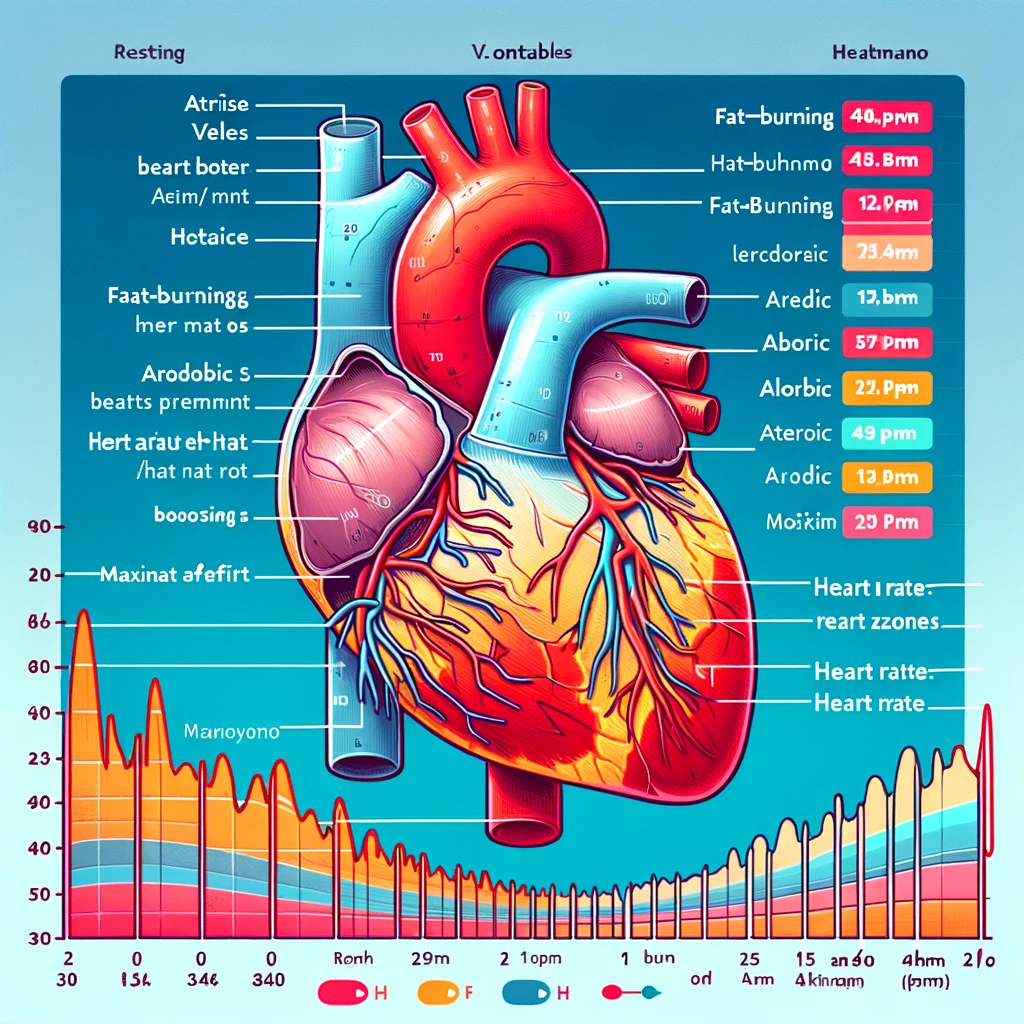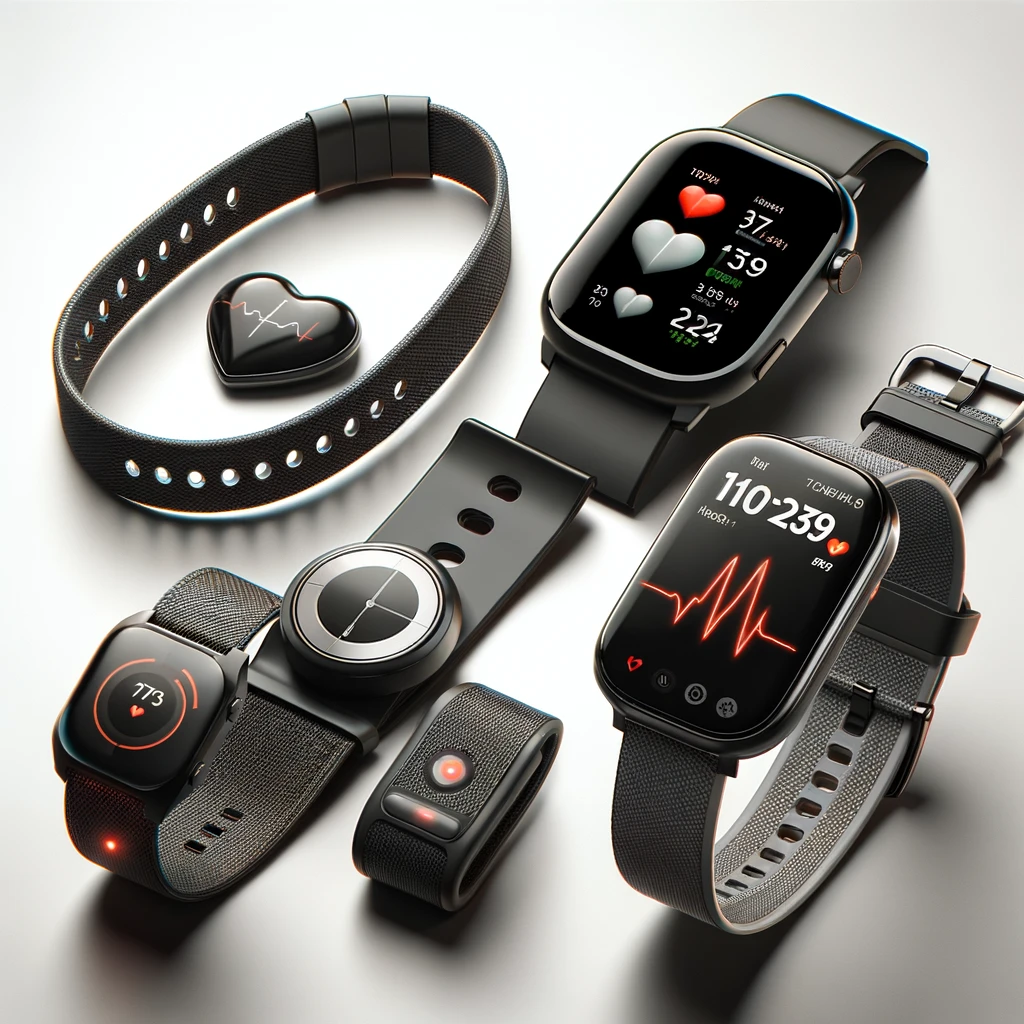Welcome to the wonderful world of heart rate training! Whether you’re a seasoned athlete, a casual jogger, or someone who’s just starting to explore the realms of fitness, understanding how to use your heart rate can transform your workouts from meh to magnificent. In this comprehensive guide, we’ll dive into everything you need to know about heart rate training, from the basics to advanced techniques. We’ll sprinkle in some fun anecdotes, bust a few myths, and give you practical tips that will make your fitness journey not only effective but also enjoyable.
Table of Contents
- What is Heart Rate Training?
- The Science Behind Heart Rate Training
- Setting Up Your Heart Rate Zones
- Tools and Gadgets for Monitoring Your Heart Rate
- Designing Your Heart Rate-Based Workouts
- Benefits of Heart Rate Training
- Common Mistakes to Avoid
- Heart Rate Training for Different Fitness Levels
- Advanced Heart Rate Training Techniques
- FAQs About Heart Rate Training
1. What is Heart Rate Training?

Heart rate training is a method of exercising where you monitor and control your heart rate to optimize your workouts. By keeping your heart rate within specific zones, you can train more efficiently, ensuring you’re neither overdoing it nor slacking off. This approach is based on the principle that different heart rate zones correspond to different levels of exertion and, consequently, different fitness benefits.
Imagine you’re driving a car. Your heart rate is like the car’s RPM gauge. Just like you wouldn’t drive in the red zone for too long, you shouldn’t keep your heart rate too high for extended periods. Similarly, cruising in the lower zones might feel comfortable, but it won’t push you enough to see significant improvements.
2. The Science Behind Heart Rate Training

The science of heart rate training revolves around understanding how your body responds to different levels of exertion. Your heart rate is a direct indicator of your cardiovascular system’s workload. By targeting specific heart rate zones, you can tailor your workouts to achieve specific goals, whether it’s burning fat, building endurance, or increasing power.
The Heart Rate Zones
- Zone 1: Very Light (50-60% of Max HR)
- This is the warm-up and cool-down zone, perfect for recovery and improving overall health.
- Zone 2: Light (60-70% of Max HR)
- Ideal for building endurance and burning fat. You’ll be able to hold a conversation comfortably.
- Zone 3: Moderate (70-80% of Max HR)
- Improves aerobic capacity and overall fitness. You’ll be breathing harder but still able to talk.
- Zone 4: Hard (80-90% of Max HR)
- Great for increasing speed and performance. Talking becomes difficult as you push your limits.
- Zone 5: Maximum (90-100% of Max HR)
- This is all-out effort, used for short bursts of high-intensity training. You can’t sustain this for long.
3. Setting Up Your Heart Rate Zones

Before you can start heart rate training, you need to determine your maximum heart rate (Max HR). The most common method is:
Max HR=220−your ageMax HR=220−your age
For example, if you’re 30 years old, your estimated Max HR would be:
220−30=190220−30=190
However, this formula is a general guideline. For more accuracy, you can perform a Max HR test under the supervision of a fitness professional.
Once you have your Max HR, you can calculate your target heart rate zones. Here’s a quick formula to get you started:
- Zone 1 (50-60%): Max HR × 0.50 to Max HR × 0.60
- Zone 2 (60-70%): Max HR × 0.60 to Max HR × 0.70
- Zone 3 (70-80%): Max HR × 0.70 to Max HR × 0.80
- Zone 4 (80-90%): Max HR × 0.80 to Max HR × 0.90
- Zone 5 (90-100%): Max HR × 0.90 to Max HR × 1.00
4. Tools and Gadgets for Monitoring Your Heart Rate

Technology has made heart rate monitoring easier than ever. Here are some popular options:
- Chest Straps: These are the gold standard for accuracy. They measure electrical signals from your heart and are great for detailed heart rate analysis.
- Wrist-Based Monitors: Found in most fitness trackers and smartwatches, these use optical sensors to measure blood flow. They’re convenient and comfortable but can be slightly less accurate than chest straps.
- Ear Clip Monitors: These clip onto your earlobe and are quite accurate, though not as commonly used.
- Finger Sensors: Often used in medical settings, these are very accurate but not practical for regular workouts.
When choosing a device, consider factors like accuracy, comfort, battery life, and additional features like GPS, activity tracking, and smartphone integration.
5. Designing Your Heart Rate-Based Workouts

Now that you know your heart rate zones, it’s time to design your workouts. Here are a few examples for different fitness goals:
For Fat Burning and Weight Loss
- Warm-Up: 5 minutes in Zone 1
- Main Workout: 30-45 minutes in Zone 2
- Cool Down: 5-10 minutes in Zone 1
For Building Endurance
- Warm-Up: 10 minutes in Zone 1
- Main Workout: 20-30 minutes in Zone 2, followed by 15-20 minutes in Zone 3
- Cool Down: 5-10 minutes in Zone 1
For Improving Speed and Performance
- Warm-Up: 10 minutes in Zone 1
- Interval Training: Alternate 1-2 minutes in Zone 4 with 2-3 minutes in Zone 2, repeat 6-8 times
- Cool Down: 10 minutes in Zone 1
These are just templates. Feel free to adjust the durations and intensities based on your fitness level and goals.
6. Benefits of Heart Rate Training

Heart rate training offers numerous benefits, including:
- Improved Efficiency: Train smarter, not harder. By staying in the right zones, you maximize your workout benefits.
- Better Recovery: Knowing when to dial it back prevents overtraining and reduces the risk of injury.
- Personalized Workouts: Tailor your workouts to your specific fitness level and goals.
- Motivation and Accountability: Tracking your progress can keep you motivated and accountable.
- Versatility: Suitable for all fitness levels, from beginners to elite athletes.
7. Common Mistakes to Avoid

Even with the best intentions, it’s easy to make mistakes. Here are some common pitfalls:
- Ignoring Recovery: Pushing too hard without adequate recovery can lead to burnout and injury.
- Neglecting Warm-Ups and Cool Downs: Skipping these can cause muscle strain and hamper performance.
- Over-Obsessing on Numbers: While heart rate data is valuable, don’t become a slave to it. Listen to your body.
- Using Inaccurate Max HR: Ensure your Max HR is accurate for effective zone calculation.
- Comparing Yourself to Others: Everyone’s heart rate response is unique. Focus on your progress, not someone else’s.
8. Heart Rate Training for Different Fitness Levels

Beginners
- Start Slow: Focus on building a base by training mostly in Zones 1 and 2.
- Consistency Over Intensity: Aim for regular, moderate-intensity workouts rather than infrequent high-intensity sessions.
- Listen to Your Body: If you feel tired or sore, take a rest day.
Intermediate
- Introduce Interval Training: Incorporate Zone 3 and occasional Zone 4 sessions.
- Mix It Up: Combine different types of workouts, such as running, cycling, and strength training.
- Track Progress: Use your heart rate data to adjust and improve your workouts.
Advanced
- High-Intensity Intervals: Regularly include Zone 4 and 5 workouts to boost performance.
- Periodization: Cycle through different phases of training, such as base building, intensity, and recovery.
- Fine-Tune Recovery: Use your heart rate data to optimize rest and recovery periods.
9. Advanced Heart Rate Training Techniques
Heart Rate Variability (HRV)
HRV measures the variation in time between heartbeats. Higher HRV indicates better recovery and fitness. Tracking HRV can help you fine-tune your training and recovery.
Lactate Threshold Training
This involves training at the point where your body starts to accumulate lactate in the blood. By increasing your lactate threshold, you can sustain higher intensities for longer.
VO2 Max Training
VO2 max is the maximum amount of oxygen your body can use during intense exercise. Training at or near your VO2 max can significantly improve your aerobic capacity.
10. FAQs About Heart Rate Training

Q: Can I use heart rate training for weight lifting? A: Absolutely! While heart rate zones are typically associated with cardio, monitoring your heart rate during weight lifting can help you understand how hard you’re working and ensure adequate recovery between sets.
Q: How often should I check my heart rate during a workout? A: It’s a good idea to check your heart rate periodically, especially if you’re aiming to stay within specific zones. Wearable devices can make this easy with continuous monitoring.
Q: What if my heart rate monitor is inaccurate? A: Ensure your device is properly positioned and calibrated. Chest straps tend to be more accurate than wrist-based monitors. If inaccuracies persist, consider consulting with a professional for advice.
Q: Can medications affect my heart rate training? A: Yes, certain medications, especially those affecting cardiovascular function, can impact your heart rate. Consult your doctor before starting heart rate training if you’re on medication.
Q: Is heart rate training suitable for all ages? A: Yes! Heart rate training can be adapted for all ages and fitness levels. Just ensure your Max HR calculations and target zones are appropriate for your age and health status.
Conclusion
Heart rate training is a powerful tool that can elevate your fitness journey. By understanding and utilizing your heart rate zones, you can create more effective, personalized workouts that help you reach your goals faster. Remember, it’s not just about working hard but working smart. Happy training!

That wraps up our deep dive into heart rate training. Whether you’re a beginner looking to start on the right foot or an advanced athlete aiming to optimize your performance, heart rate training has something to offer everyone. Now, grab your heart rate monitor, lace up your shoes, and get ready to train smarter!

